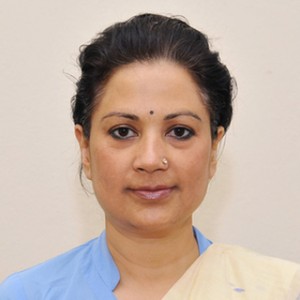Columns
Declining standards of journalism
Spreading misinformation affects media credibility and harms all democratic institutions.
Ila Sharma
Recently, Indian Chief Justice NV Ramana commented on the “gradual disappearance of authentic investigative journalism in India”. Such an observation from the head of the judiciary of any country speaks volumes of the state that we are in. There are no global boundaries to misinformation, and Nepal is no different, except for the scale, perhaps. As journalism students at the Nepal Press Institute in the 1980s, we were taught not to run a story if we did not have the other side. While editing, we were taught to cut it out if in doubt. Today's reporters seem to have different priorities from accuracy and fact-checks.
Back then, technology was essential, there was no internet, just landline phones; but fact-checking and accuracy were the basic ethics. The competition amongst television channels for breaking news and online portals to report the information first, leading to shorter timeframes for verifying news sources, has led to lapping up sensations, mostly half-truths and untruths. Truth or journalistic ethics has become of no concern. However, the values and ethics of journalism do not, and should not, change.
Fake news stories
It is not only online media, but even mainstream media outlets cannot resist the temptation to cover fake news stories repeatedly for their sensational value, giving them added traction. Today, there is such an increasingly diverse range of sources of misinformation, including messaging apps like WhatsApp and social media platforms like Twitter, Instagram and Facebook. Then there is YouTube and some online news portals, which are no less at fault when it comes to irresponsible journalism.
In the 1980s and 1990s, misinformation was limited due to the slow dissemination rates of information, and the limited number of mediums for news circulation like the newspaper or the radio. Spreading misinformation affects media credibility and harms all democratic institutions. One of the solutions is to encourage investigative journalism. Another is to promote fact-checking. Both these functions are not in the interest of governments, politicians, business lobbies or anybody with the necessary wherewithal to fund these activities. Governments, in their intolerance, sometimes even penalise investigative journalism. Journalists get killed or threatened for speaking or writing. A recent example of Shital Sah in Nepal is one.
As for fact-checking, it does not yet seem to have a profit making model. Therefore, it is not an easy job. Alt News in India has been doing commendable work while South Asia Check, Centre for Investigative Journalism and portals like Record Nepal carry the beacon. However, these efforts never prove sufficient to fight the flood of misinformation.
We need an organisation in Nepal that is dedicated to verifying the authenticity of the news, has a transparent list of crowd funding, and has the necessary tech knowhow and extensive networking across borders. We need many organisations who would actively do fact-checking which includes verifying social media rumours across various platforms, verifying claims made by political parties or politicians, verifying mainstream media information for any bias, political or otherwise, using reverse-image searching and official data sources, and coordinating with local authorities to verify the claims made by a news article. Afterwards, an amended version should be written and released on the website, as does Alt News. South Asia Check by Panos South Asia is also a great initiative but just not enough.
A variety of artificial intelligence (AI) tools to combat fake news and assist in fact-checking can be used by individuals or organisations working on transparency in reporting. AI tools can be used from anywhere and are not region-specific. The Credibility Coalition’s project Certified Content Coalition, for example, has a project in India, called BOOM which works exclusively in India covering Hindi, English and Bengali news. The Credibility Coalition is an initiative founded in 2018 to encourage standards among online media publishers and certify publishers who meet such standards. Publishers who are approved receive and display a digital certificate. Disinformation index is another web-based tool founded the same year that rates news outlets based on the “probability of disinformation on a specific media outlet”. This rating system covers all media types and shows a real-time score.
There is also a web-based “decentralised trust protocol” blockchain tool founded the same year that is designed to track the credibility of news transparently. It measures trust by analysing the content and what it is linked to, establishing how the content is spread across media organisations. All media sources are given trust rankings and also include fact-checker resources. There is also an initiative called International Fact-Checking Network (IFCN) Code of Principles, founded in 2015 to promote fact-checking in journalism. The creation of the IFCN Code of Principles is to help establish standards for fact-checking methods. The IFCN also organises fellowships, training and conferences.
International initiatives
Open Sources, interestingly, is a web-based database of information sources that have been analysed in terms of their reputations for producing credible news. This database rates websites as fake news, satire, extreme bias, conspiracy theory, rumour mill, state news, junk science, hate news, clickbait, proceed with caution, political and credible. While all such international initiatives face adversities of resources, they also face language barriers and cultural contexts that may lead to misinterpretation of facts, which pose a challenge to fact-checkers to verify information sources.
The way forward would be long-term, sustained and multi-stakeholder initiatives. Strict legislation is needed that brings the slightest act of "deliberate" misinformation into its net. Most important of all is digital, media and informational literacy, so an awareness of etiquette, privacy and morality is instilled into the minds of all users. Social media and digital literacy must also be covered in school curriculums, so a fair sense of discrimination of right from wrong develops among all users. No number of technological safeguards or enactments can check violations unless they are prevented in the first place.




 15.12°C Kathmandu
15.12°C Kathmandu















